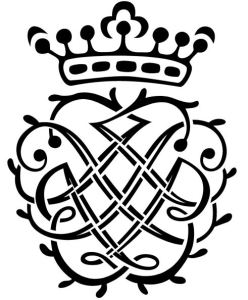The Image of Melancholy
Barokksolistene
Sam Wanamaker Playhouse, 20 September 2015
The Norwegian group Barokksolistene make a point of ‘pushing boundaries’ with their occasionally curious mixture of Norwegian folk music, early music and electronic jiggery-pokery, played on period string instruments. They brought this combination to the Globe’s Sam Wanamaker Playhouse for a programme based on their recent CD, The Image of Melancholy. The electronic jiggery-pokery opened the show with ambient background sounds whilst two of the Globe’s candle-lighters slowly lit the 48 candles on the six central candelabra, seemingly designed specifically to drip molten wax on to the performers below. As the background electronics began to merge with an off-stage violin sound, the eight musicians (an enlarged string quartet, plus archlute and what was described as an organ) entered the stage one by one and sat in a circle, as if waiting for a group therapy session. It was clear from the title that this evening was unlikely to be a bundle of fun, but I wasn’t quite prepared for it actually turned out to be.
The thing that was ‘described as an organ’ turned out to be one of those little hand-pumped squeeze-box reed organs usually to be found in Indian ashrams, with what looked like a tiny midi keyboard sitting on top, linked to a laptop. I originally wondered if all the electronic sounds were coming via the latter combination, but it turned out that there was somebody sitting in the gallery producing ‘soundscapes’. By and large, these consisted of the ambience background sounds we had already heard, reminiscent of Brian Eno’s early pieces, plus some very electronic-sounding organ tones of the type used in late 1960’s alternative rock groups. Very few of the pieces we heard were without some sort of background sound like this, whether by the likes of Holborne, Dowland, Gibbons or Byrd or obscure (at least to me) Norwegian folk melodies.
Staging is key to Barokksolistene’s performances, and much thought had gone into this, with on and off stage comings and goings including, at one stage, a bizarre dance given by the group’s leader Bjarte Eike, out of sight of most of the audience behind the central door at the back of the stage. His rocking back and forth on his own in the dark reminded me of scenes from The Wicker Man. This came as the culmination of an extended passage of what I initially thought was tuning up (and still might have been), but which then morphed into this rather ritualistic scene. Eike sees himself as very much the centre of attention, visually and aurally, and despite the mood of a particular piece, was often to be found standing in the middle of the sitting circle. Not surprisingly, the concert ended with an extended violin solo with Eike standing at the front of the gallery to the accompaniment of phase-shifting ambient sound and the archlute while the candelabra rose and fell, seemingly randomly. There was a large and enthusiastic crowd of friends and family whose whooping and yelling at the end of the concert seemed slightly out of keeping given the subject matter of the evening’s concert and, particularly, the last piece, a lament on the death of the composer’s wife. But perhaps they do things differently in Norway – judging by the encores, Norwegian weddings have more than a touch of melancholia to them.
 The highlight was the singing of soprano Berit Norbakken Solset (left), both in the folk songs and the early pieces, notably in Buxtehude’s bittersweet lament for his father, the Klag-Lied, and in the equally expressive Byrd ‘Ye sacred muses’, a lament on the death of Tallis with the mournful phrase “Tallis is dead, and music dies”. Instrumentally the finest sounds came from strings in the early pieces, producing a muted tone quite close to that of the viol consort which would have almost certainly been the preferred accompaniment to singers of the time. I am not sure what the likes of Dowland or Holborn would have made of the frequent foot-tapping from one of the players, but it seemed more of a performance tic than relating to any sense of rhythmic enhancement. The foot-tapping turned into foot-stomping from Bjarte Eike during some of the livelier Norwegian contributions and early English dance pieces.
The highlight was the singing of soprano Berit Norbakken Solset (left), both in the folk songs and the early pieces, notably in Buxtehude’s bittersweet lament for his father, the Klag-Lied, and in the equally expressive Byrd ‘Ye sacred muses’, a lament on the death of Tallis with the mournful phrase “Tallis is dead, and music dies”. Instrumentally the finest sounds came from strings in the early pieces, producing a muted tone quite close to that of the viol consort which would have almost certainly been the preferred accompaniment to singers of the time. I am not sure what the likes of Dowland or Holborn would have made of the frequent foot-tapping from one of the players, but it seemed more of a performance tic than relating to any sense of rhythmic enhancement. The foot-tapping turned into foot-stomping from Bjarte Eike during some of the livelier Norwegian contributions and early English dance pieces.
Barokksolistene’s describe their take on early music as treating it as “just old pop music”. I did wonder whether the rather new-age sonic background to much of this music gave it the feel of ‘old pop music’, but from around 50 years ago.
